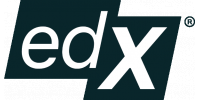- From edx.org
5G Deployment

- 6 Sequences
- Introductive Level
- Starts on 31 июля 2023
- Ends on 2 декабря 2023
Course details
Syllabus
The course consists of an orientation module and six content modules. A learner is expected to spend at least 4-6 hours per week on each module.
Module 1 – Introduction to 5G Deployment
Learning outcomes:
- Identify the key challenges of 5G deployment.
- Explain 5G deployment aspects related to massive MIMO, mmwave, and other issues.
Module 2 - 5G Radio
Learning outcomes:
- Understand the propagation challenges associated with 5G radio frequencies.
- Explain the core concept of diversity and how it is used to maximise the efficiency of spectral utilisation in a multiple access scenario.
- Describe MIMO and beamforming capabilities and how beamforming enables spectral throughput efficiency.
Module 3 – 5G Radio Access Network Virtualisation
Learning outcomes:
- Differentiate various 5G Radio Access Network (RAN) technologies.
- Describe how 5G RAN is virtualised, and its advantages.
- Execute a practical lab activity on 5G RAN Virtualisation.
Module 4 – 5G and Multi-Access Edge Computing for Disaggregated Core
Learning outcomes:
- Explain the purpose, principles, and architecture for 5G Multi-Access Edge Computing (MEC).
- Execute a practical lab activity on 5G and MEC.
Module 5 – 5G Network Orchestration
Learning outcomes:
- Explain different aspects of 5G network control and orchestration.
- Describe solutions to realise the orchestration of 5G networks.
- Execute a practical lab activity on 5G Network Orchestration.
Module 6 – 5G Deployment Case Studies
Learning outcomes:
- Examine a 5G deployment case study on IIoT or 5G-enabled factory of the future.
- Examine a 5G deployment case study on private 5G for autonomous mining.
- Investigate a case study on the role of 5G in Collaborative-Intelligent Transportation Systems.
Module 7 – Course Summary
This conclusion module wraps up the course, summarising the content in the previous six modules.
Prerequisite
None
Instructors
Himanshu Agrawal
Lecturer, Cisco-Curtin Centre for Networks, School of Electrical Engineering, Computing and Mathematical Sciences at Curtin University
Nasim Ferdosian
Senior Research Associate, Cisco-Curtin Center for Networks, Curtin University. at Curtin University
Yifei Ren
Research Fellow, Cisco Curtin Centre for Networks, Curtin University at Curtin University
Iain Murray AM
Professor and Curtin Academy Fellow at Curtin University
David Davidson
Professor at Curtin University
Editor
L’université Curtin est l’institution d’éducation supérieure la plus importante de l’État d'Australie-Occidentale. Elle a son principal campus à Perth, dans cet État. Fondée en 1966, elle fut d'abord connue comme le Western Australian Institute of Technology (WAIT) puis à partir de 1986 comme l'université de technologie Curtin avant de prendre son nom actuel en 2010. Elle est nommée d'après John Curtin, premier ministre d'Australie pendant la Seconde Guerre mondiale.

Platform
EdX est une plateforme d'apprentissage en ligne (dite FLOT ou MOOC). Elle héberge et met gratuitement à disposition des cours en ligne de niveau universitaire à travers le monde entier. Elle mène également des recherches sur l'apprentissage en ligne et la façon dont les utilisateurs utilisent celle-ci. Elle est à but non lucratif et la plateforme utilise un logiciel open source.
EdX a été fondée par le Massachusetts Institute of Technology et par l'université Harvard en mai 2012. En 2014, environ 50 écoles, associations et organisations internationales offrent ou projettent d'offrir des cours sur EdX. En juillet 2014, elle avait plus de 2,5 millions d'utilisateurs suivant plus de 200 cours en ligne.
Les deux universités américaines qui financent la plateforme ont investi 60 millions USD dans son développement. La plateforme France Université Numérique utilise la technologie openedX, supportée par Google.

